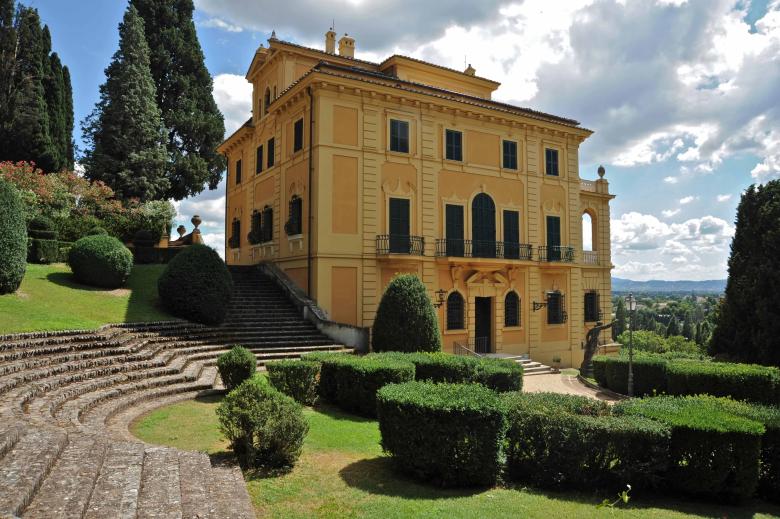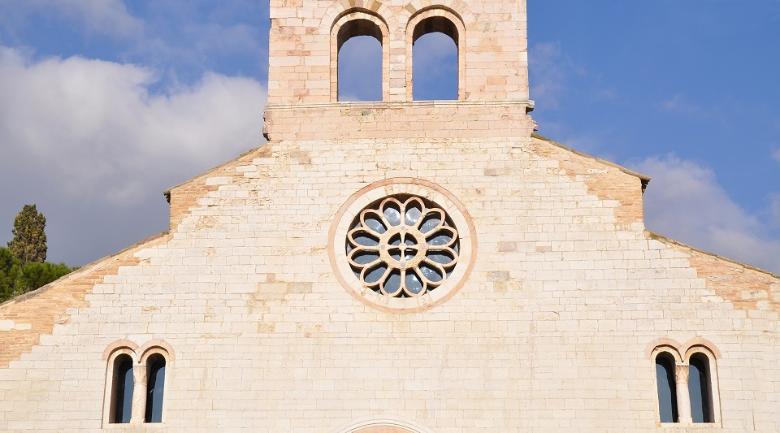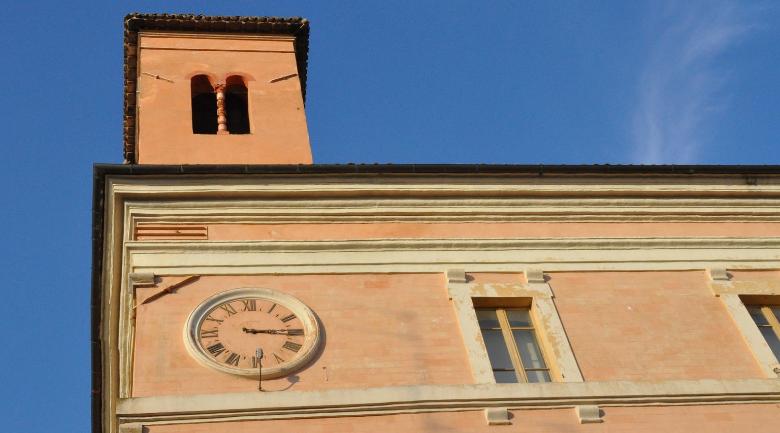Twenty rooms have been revealed, from the central section of the villa, covering a total surface of about 500 square metres. Ten of these rooms preserve very beautiful floors with polychrome mosaics, featuring geometrical and figurative motifs. The entrance has been lost.
Around the peristyle, the arcaded courtyard surrounding the internal garden, there are several rooms, whose names derive from the figures and the decorative motifs of the mosaics: the Hall of Birds, the Hall of Amphoras, the Triclinium, the Hall of Radiant Sun, the Hall of Geometrical Mosaics, the Peristyle, the Hall of Shields and the Heated Room.
Among the rooms, worthy of note are the wide triclinium and the Hall of Banquets whose floor has at its centre a scene of wine being poured. Other characters, who are arranged symmetrically, represent the Seasons, associated with figures of Satyrs of the Dionysian procession (Bacchus) meaning an allusion to well-being, a good harvest and pleasure.
The excavation highlighted two constructive phases: the first stage in the Augustan age (27 BC–14 AD) and the following one in the height of the imperial age, around the end of 2nd century AD.
The Villa of Mosaics in Spello, also thanks to the educational devices and to the multimedia system, will allow you to plunge into the past and to live a virtuous dialogue between old and modern city. The past and future have never been so close.
Numerous workshops dedicated to art and history are held at the Villa dei Mosaici in Spello for young and old. For more information and bookings: vivispello.it.
For further information:
www.villadeimosaicidispello.it



































.png/1466f1b0-6b0b-66c3-d028-c44e27836a4a?width=780)

.jpeg/26712e88-9665-3ae2-a85e-3bd2b38b8a93?width=780)
